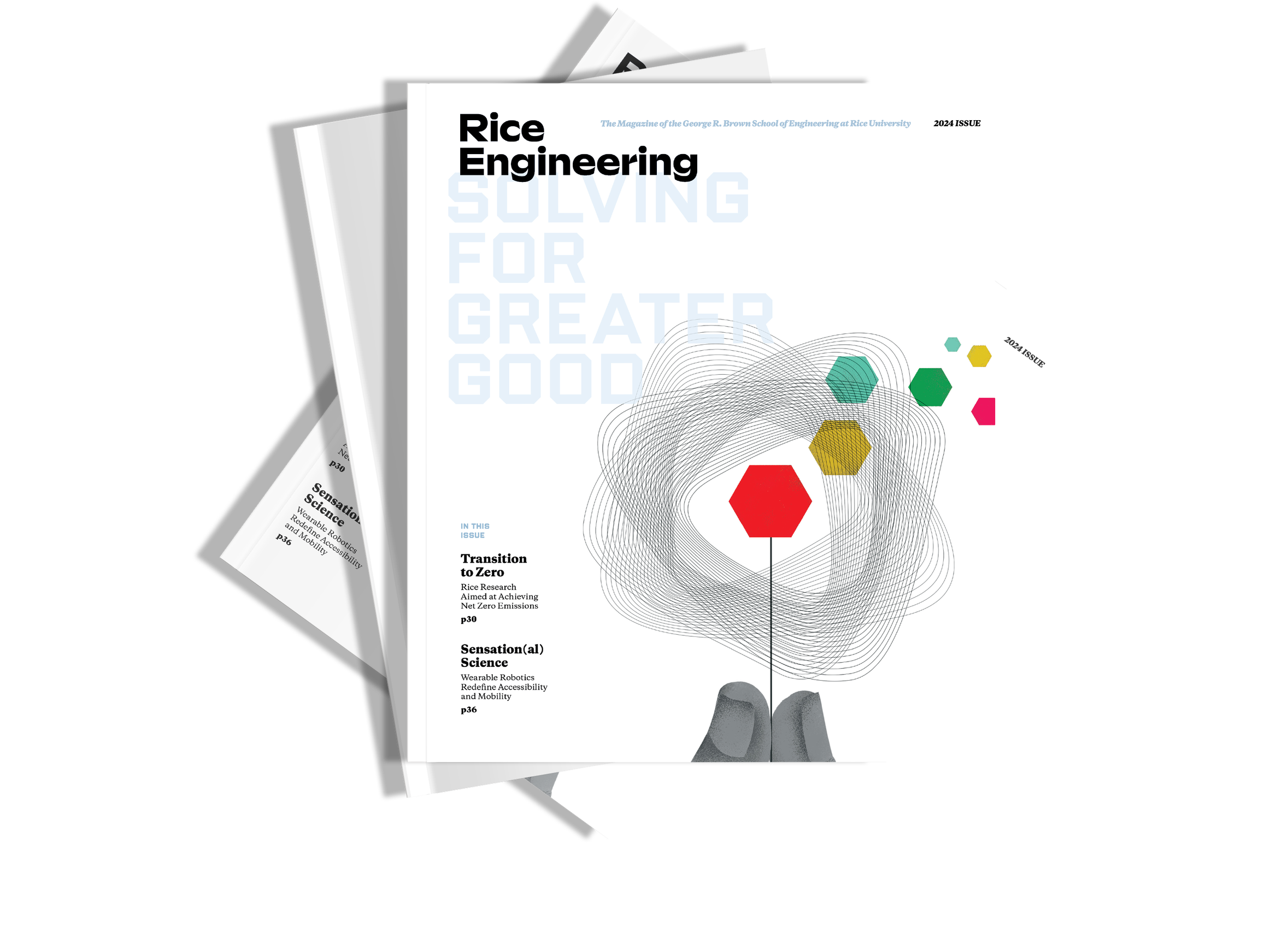
The spring 2024 issue of Rice Engineering Magazine is here!
At Rice Engineering, we are driven by a passion for innovation and a commitment to responsible engineering practices. It’s with great excitement that we unveil the new design of Rice Engineering magazine, which underscores our dedication to excellence in research, education, and service. The 2023-24 issue is full of news about how Rice Engineering is solving for greater good.
From fashion to function: Creating robots that look and feel good
Vanessa Sanches describes herself as a "fashion designer-turned-engineer,” combining study at the Fashion Institute of Technology (FIT) in New York City with a Ph.D. in materials science and mechanical engineering from Harvard.
“I took a non-linear path. Even though I was pretty nerdy, I mistakenly believed that art vs. science was an either/or choice. I started my higher education in fashion school but realized I was looking for a different way to innovate,” said Sanchez, who will join the Rice faculty in July as an assistant professor of mechanical engineering.

Sanchez has already collaborated on several papers devoted to wearable robotics with another mechanical engineer at Rice, Daniel Preston, whom she met at Harvard.
“In my lab,” Preston said, “we use existing materials in previously untested applications. For instance, soft materials for grippers and actuators that help broaden the capabilities of robots. Like Vanessa, we also develop and test completely new materials that enable new solid interactions. She will fit in perfectly in our wearable robotics work.”
To create softer materials with finely tuned mechanical properties for wearables, Sanchez’s lab at Rice will be fitted with specialized equipment such as a 3D knitting machine and 3D loom, which can produce seamless articles of clothing with little material waste.
Soft robotics offer advantages over more traditional wearable robotics designs, which often have rigid exoskeletons. They are inherently safer because of their compliance, and flexible so they fit into tight spaces and conform to the body. Most soft robots are powered by inflating and deflating air chambers. An important goal is eliminating tethers and bulky power sources to enhance wearers’ mobility and ease of motion.
After attending FIT, Sanchez went on to get her B.S. in fiber science from Cornell. Since earning her doctorate from Harvard in 2022, she has served as a postdoctoral fellow in chemical engineering at Stanford University, where she was awarded a $300,000 grant from the National Science Foundation to research active materials based on supramolecular shape memory polymer fibers.
This background will prepare her research group to work on responsive textiles for use in assistive wearables, ranging from the molecular to the structural and device levels. Soft robots have attracted much attention in recent years for use in biomedical and consumer devices. Most current assistive devices are pneumatically actuated and require a pneumatic tether, which limits wearable applications requiring multiple controlled actuators.
However, by pairing liquid-vapor phase change actuation with a textile-based laminated manufacturing method, smart thermally actuating textiles (STATs) are created and they eliminate the need for pneumatic tethers.
“STATs are lightweight and unobtrusive for wearable applications,” Sanchez said. “We can customize the design for individuals. By using integrated sensing and heating elements, STATs make possible the closed-loop feedback that enables dynamic pressure control.”

Sanchez foresees the inclusion of cooling components or heat-pipe elements into STAT design to facilitate faster, more precise deflation of wearables. Stretchable knit heat-sealable textiles, inspired by soft robotics work performed with elastomers, would enable more complex actuation by wearers.
“Some people don’t have the mobility to roll up their sleeves or easily unzip their jacket,” Sanchez said. “Making a fabric that responds to what people want and to their environment can be enormously helpful to them. I also want to focus on reducing the stigma we sometimes see around devices for people with disabilities. They don’t want to wear something that looks like it belongs in a hospital.”
